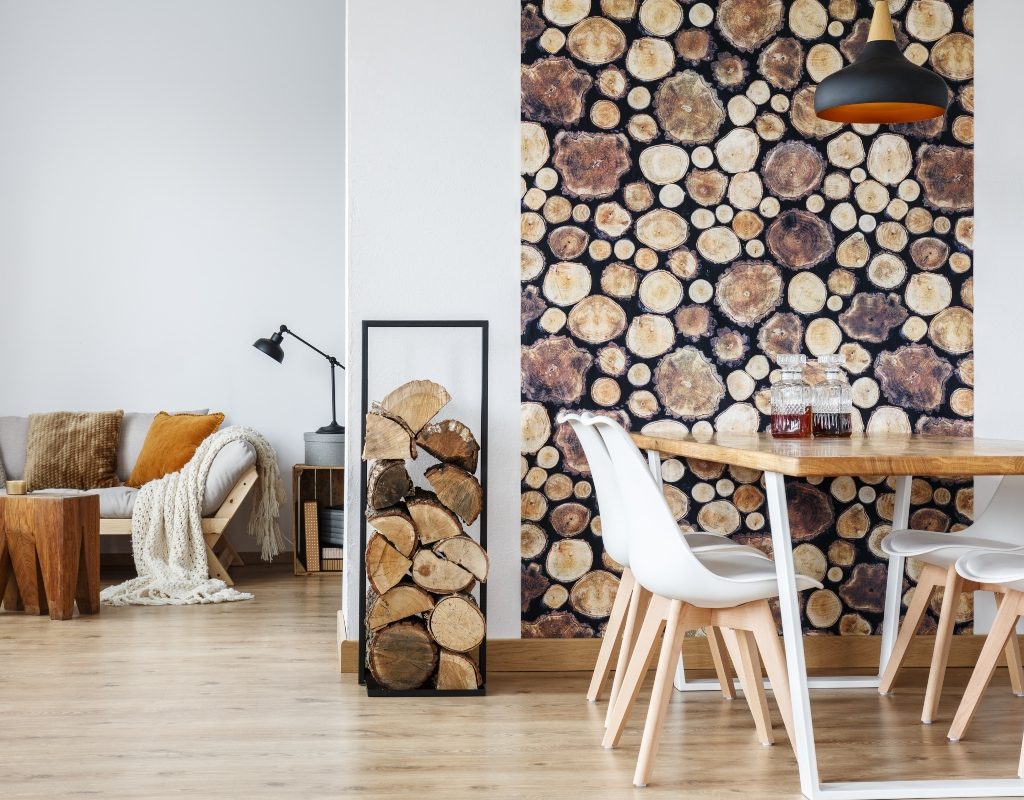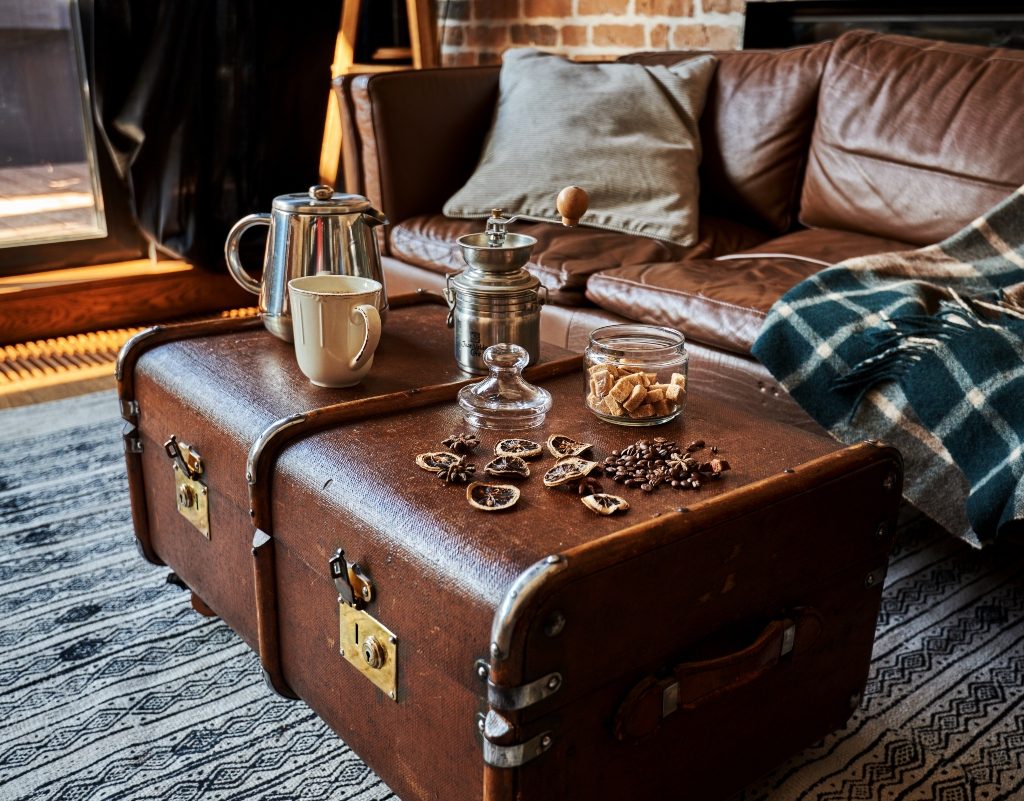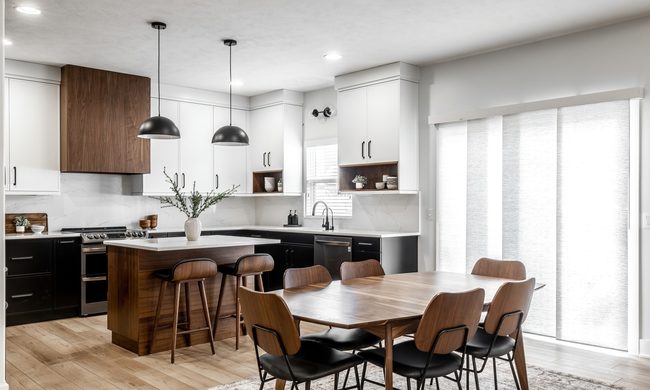Raw materials, natural decor, exposed stone, and neutral color palettes all come together to create a stunning, rustic design scheme. Though this style can bring a perfect blend of luxury and comfort to the home, it’s quite easy to become swept up in cliches and trends.
These common stylistic mistakes can leave your home feeling overdesigned and maybe even a little cluttered. To keep your home looking thoughtfully designed, we’ve collected the best tips and tricks so you can create a space that feels rustic and not frenzied.
Going overboard with the theme
The biggest mistake new designers make is going overboard with the theme. It can be easy to get carried away with all of the details, but this can make the space feel unfocused. This leads to rooms that look kitschy and thematic instead of balanced and full of personality. What’s worse is that these designs tend to ignore practicality, and you end up with a space that functions poorly.
Living rooms are especially susceptible to overly thematic designing. To avoid this, we recommend blending neutral elements, simple decor items, and only using a hint of rustic design throughout the room. For example, consider using a sleek, neutral-toned couch that blends in with the rest of the room, then decorate it with faux furs, a raw wood coffee table, and maybe a leather sitting chair nearby. By picking a few central pieces that are on theme, you can maintain the rustic aesthetic without creating a space that becomes gimmicky.

Lacking balance in the design
Similar to over-theming, many homeowners lack balance in their design scheme. When designing a rustic living space, it’s important to pair these authentic, natural materials with pops of color and accents to break up the neutral color scheme.
For instance, use a brightly colored bohemian-inspired basket to hold plush woolen blankets. Or, place a sleek, glass coffee table in front of your exposed stone fireplace. By incorporating elements from other styles into your design, you can create a sense of balance and cohesion in the space.
Becoming too cluttered
A major con to rustic designs is that they can appear too cluttered. Pairing raw woods of the same color and opting for several plants, patterns, textures, materials, and stonework can lead to a room that lacks focus. Visitors don’t know where to look as they become distracted by the various knick-knacks and decorations. Without pops of color and unique textures to break up the appearance of the space, it starts to look monotonous and cluttered, even if it’s actually pretty tidy.
Additionally, it’s easy to go overboard with the decor, using several jars, vases, rugs, blankets, and pillows to adorn the space. To avoid this, we recommend taking a more minimal approach to your decor. Let the big, natural pieces become the center of attention and adorn it with simpler wall art, decorative vases, and rugs.
Using cheap furniture
Rustic design is all about rich, raw materials. Stunning cut stone, oversize logs, natural woods, leather, wool, and other earthy materials are some of the defining characteristics of rustic design. However, if you add cheap furniture into the mix, you risk losing the natural and authentic appeal of this style.
Avoid plastic furniture, polyester rugs, and cheap picture frames since they’ll stick out like a sore thumb against the more expensive-looking, ornate pieces. You don’t need to blow your budget on the most high-end furniture, but try to avoid pieces that look inexpensive or mass-produced.

Opting for decorations that are too “new”
Rustic designs don’t automatically need to be antique, but the two styles do go hand in hand. Rustic pieces should look homey and worn in, so new shiny pieces might not blend well with the other weathered decor. Instead of heading to the furniture store, try purchasing things secondhand or heading to your local antique shop. That being said, authentic antique furniture can cost a pretty penny, so consider aging your cabinets and tables with paint, stain, and sandpaper.
Rustic design is all about cozy cabin vibes. It’s an aesthetic that focuses on natural materials and a laid-back lifestyle. While a rustic scheme is best achieved with authentic pieces, raw woods, and lived-in furniture, you should make it your own by incorporating simpler pieces, personalized furniture, and other small touches. By avoiding a few common design mistakes, you can create a stunning living room that exceeds all your expectations.



